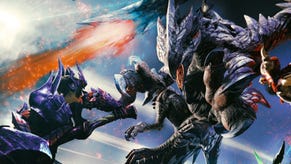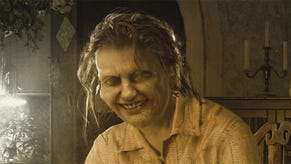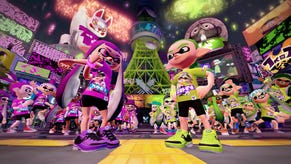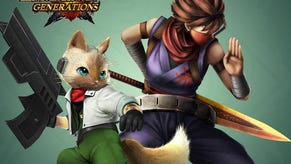Monster Hunter Generations 3DS Review: All the Hits
Capcom assembles the best Monster Hunter content, new and old, for the most refined and accessible take on the formula to date.
This article first appeared on USgamer, a partner publication of VG247. Some content, such as this article, has been migrated to VG247 for posterity after USgamer's closure - but it has not been edited or further vetted by the VG247 team.
For as much as long-running series have pushed me away with their inability to innovate, there's a certain value in how committed Monster Hunter has been to its singular premise.
On the surface, Monster Hunter hasn't changed very much since its PlayStation 2 debut in 2004. Over a decade later, the core experience essentially remains the same: You suit up appropriately, bring along the right items, and journey through an environment split into multiple chunks to track, pursue, and eventually kill (or trap) one of many massive beasts. By not deviating from this premise, Capcom has been able to steadily improve Monster Hunter in a number of small-but-important ways, all while doubling down on the impressive (and intimidating) amount of depth the series thrives on.
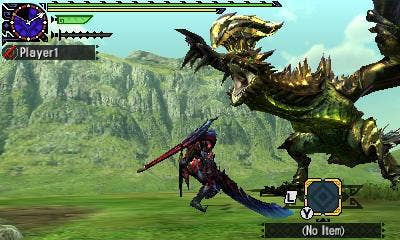
And the latest installment, Monster Hunter Generations, fills the same role as other Monster Hunter sequels by making all preceding games in the series irrelevant with its many improvements. If the meticulous planning and methodical combat of Monster Hunter turned you off in the past, though, Generations won't do much to change your mind.
Thrill of the Hunt
If you've never played a Monster Hunter game, it's essentially an RPG—though one that plays by its own set of rules. Instead of leveling up your character, Monster Hunter revolves around crafting and improving sets and armor and weapons in order to grow more powerful. And, since most of the best equipment comes from the parts of monsters you're tasked with fighting, much of the experience involves rumbling with the same creatures over and over in order to build your dream loadout. While brute force can get you through most of the earlier encounters, equipping gear that can negate status effects and lessen elemental attacks—and take advantage of enemy weak points—soon becomes a necessity.
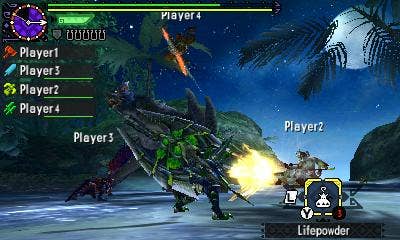
Monster Hunter's combat feels straight out of a fighting game in that each of its many weapon types have their own movesets, combos, and special abilities, and simple button-mashing can only get you so far. Seeing as most weapons are roughly the size of your character (or larger), successfully connecting with a monster requires a bit of planning, as well as familiarity with said monster's hitboxes and your weapon's various animations. Above all, Monster Hunter's battles are about endurance: While some of the early hunts may take you only 15-20 minutes, felling some of the bigger, more dangerous creatures—even when playing in a group of four—can bring you within minutes of the hour-or-so you're generally given for every hunt. And while spending upwards of 60 minutes fighting a single enemy may seem a little excessive to Monster Hunter outsiders, few experiences in gaming beat the dopamine rush that happens whenever someone lands that last hit and the triumphant music starts playing.
New Tricks
Monster Hunter Generations goes to some lengths to welcome new players without compromising its central idea. "Prowler Mode," in which players take the role of a Felyne (Monster Hunter's cat race), allows newcomers to get a taste of the Monster Hunter experience, but with fewer of the limitations—think of it as the "bumper bowling" version of Monster Hunter. In general, Capcom has done a fine job of making Generations more intuitive than previous installments by incorporating a host of tiny changes and adjustments too numerous to list in a single review (though I touched on some of them in this article). Make no mistake, though: Even if many things in Monster Hunter have been made more convenient, it's still an incredibly complex video game. Generations includes a handful of training quests to walk beginners through the basics, but those fresh to Monster Hunter should still consult a beginner's guide or a friendly veteran of the series before rolling up their sleeves and jumping in.
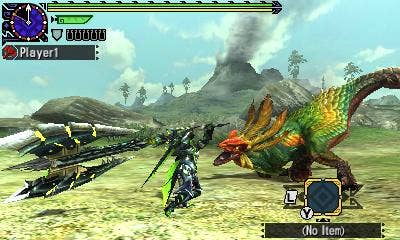
By far, Generations' biggest change comes in the form of Styles, which allow you to slightly tweak your moveset. There's one that's essentially classic Monster Hunter, one that allows you to use an additional Hunter Art—new passive and active moves that can be activated after charging a meter—one that allows you to jump at any time during combat, and one that enables you to pull off powerful counterattacks if you read a monster correctly and strike at the right time. The Aerial Style definitely makes for the most interesting of the bunch, as your new jumping ability essentially allows you to mount a monster at any time, instead of having to lure them to a cliffside and jump onto their backs from a higher elevation. Even with these additions, I felt comfortable rolling with the standard Monster Hunter Style—though I imagine more adventurous hunters will have a great time playing around with the more experimental ones.
Something Old, Something New
With "Generations" being part of its title (in English, anyway), this latest Monster Hunter isn't really hiding the fact that a good portion of its content is recycled—albeit improved. And while that would be an issue with most other games, Monster Hunter has always had a habit of bringing back fan favorites while gradually introducing new creations. Plus, so much of the core experience of Monster Hunter is built around repetition that I didn't really bat an eye at fighting, say, another Tetsucabra despite killing a dozen of them in last year's 4 Ultimate. And that's a testament to just how well Generations' battles work: It doesn't necessarily matter what you're fighting, since it's always always a rewarding affair—especially if you get some juicy drops as a result.

Even if I only got into Monster Hunter with 2013's 3 Ultimate, after playing nearly 300 hours of the series in my lifetime, I've yet to be fatigued by Capcom's hardcore RPG experience. Granted, it'd be fun to see Capcom get a little experimental with Monster Hunter by dropping the segmented zones in favor of singular, large area for players to hunt in, but their devotion to improving a somewhat antiquated design has led to a series that can only get better with every sequel. And that's exactly the case with Monster Hunter Generations: Veterans get a superior version of the experience they love, while newcomers have a chance to break into the series with an installment that's somewhat more welcoming. Monster Hunter may not be for everyone, but if it's for you, it doesn't get any better than Generations.
InterfaceMonster Hunter's interface remains as complex and intimidating as ever, though it becomes nearly second nature once you get over the learning curve.
Lasting AppealFrankly, there's so much to do in Monster Hunter Generations—and so many ways to do it—you could probably play it forever. Or, at the very least, until the next sequel.
SoundGenerations' battle themes provide the perfect accompaniment for epic fights against giant monsters, which each have their own unique roars, grunts, and screams.
VisualsEven though it's working within the limitations of the five-year-old 3DS, Monster Hunter Generations still looks great, and manages to keep important elements visually distinct.
ConclusionKeeping with the tradition of Monster Hunter sequels, Generations doesn't rock the boat. Instead, it doubles down on the core formula, while tweaking several existing features to make them much friendlier. Overall, it's an experience designed for Monster Hunter veterans—but one that also extends a helping hand to newcomers.

